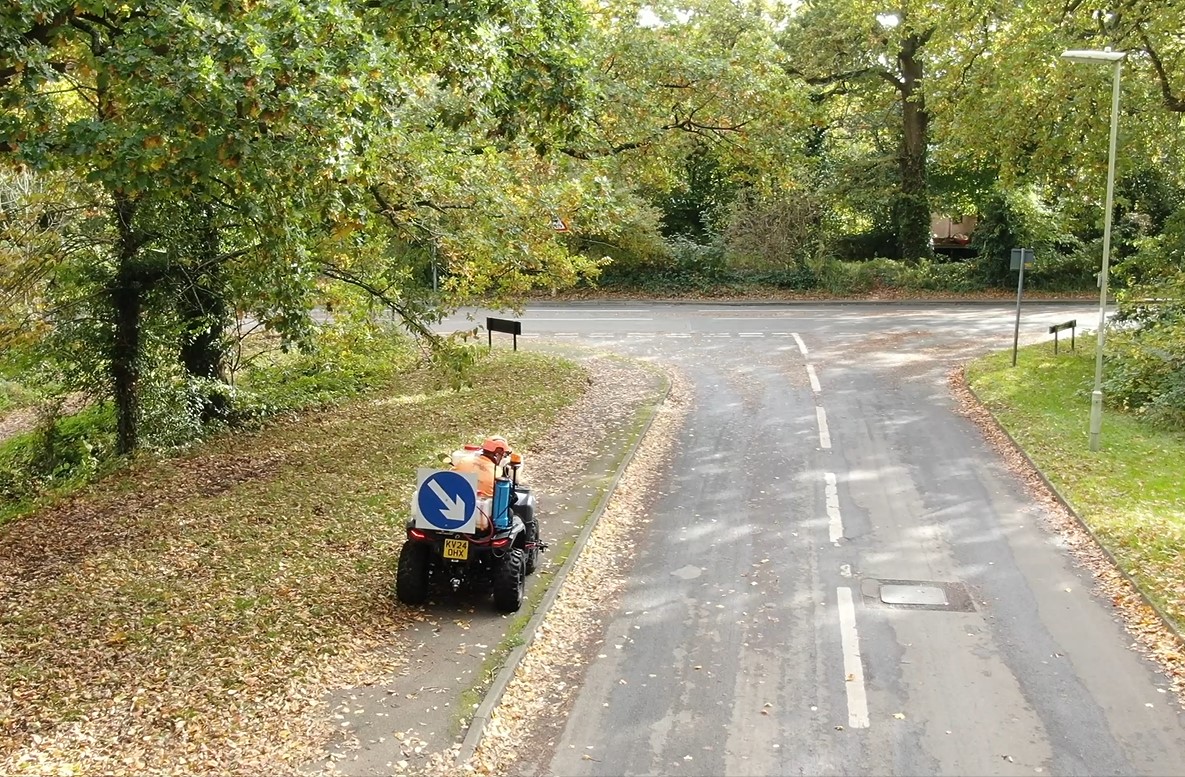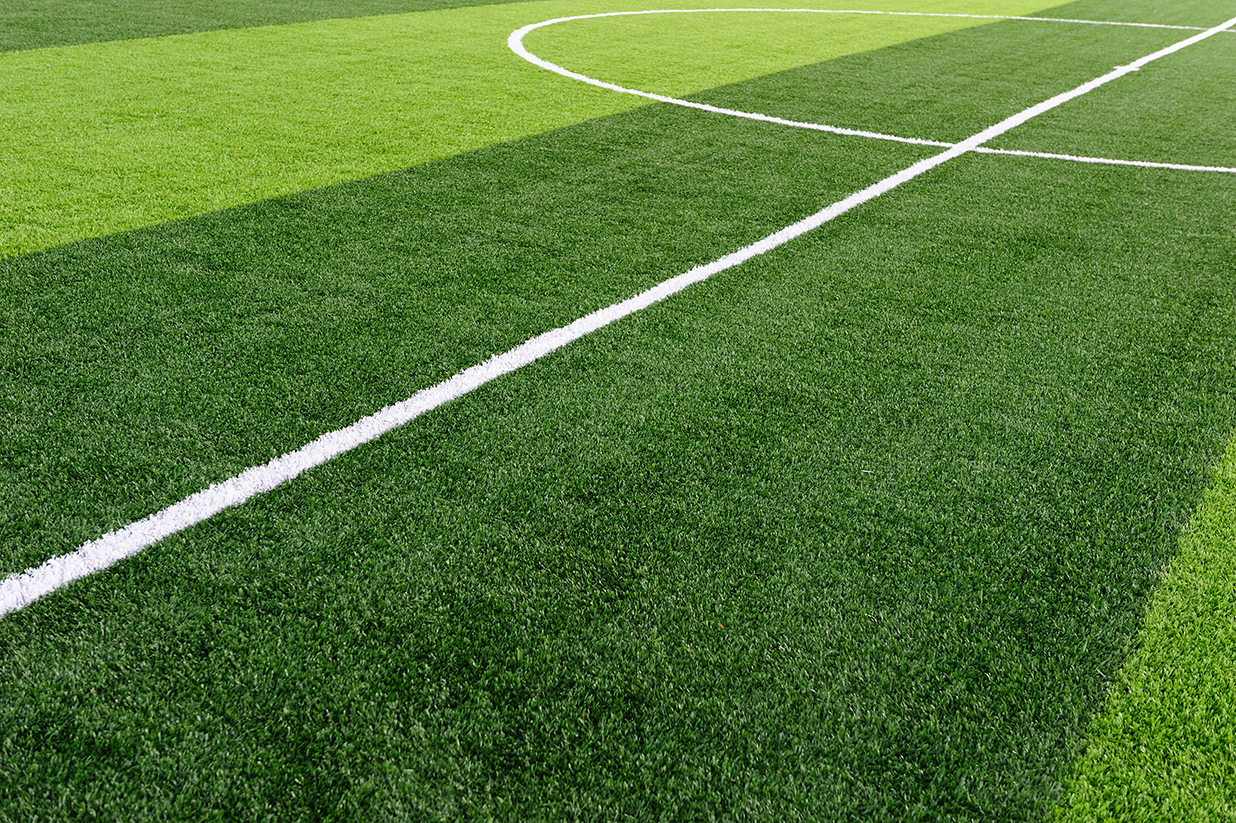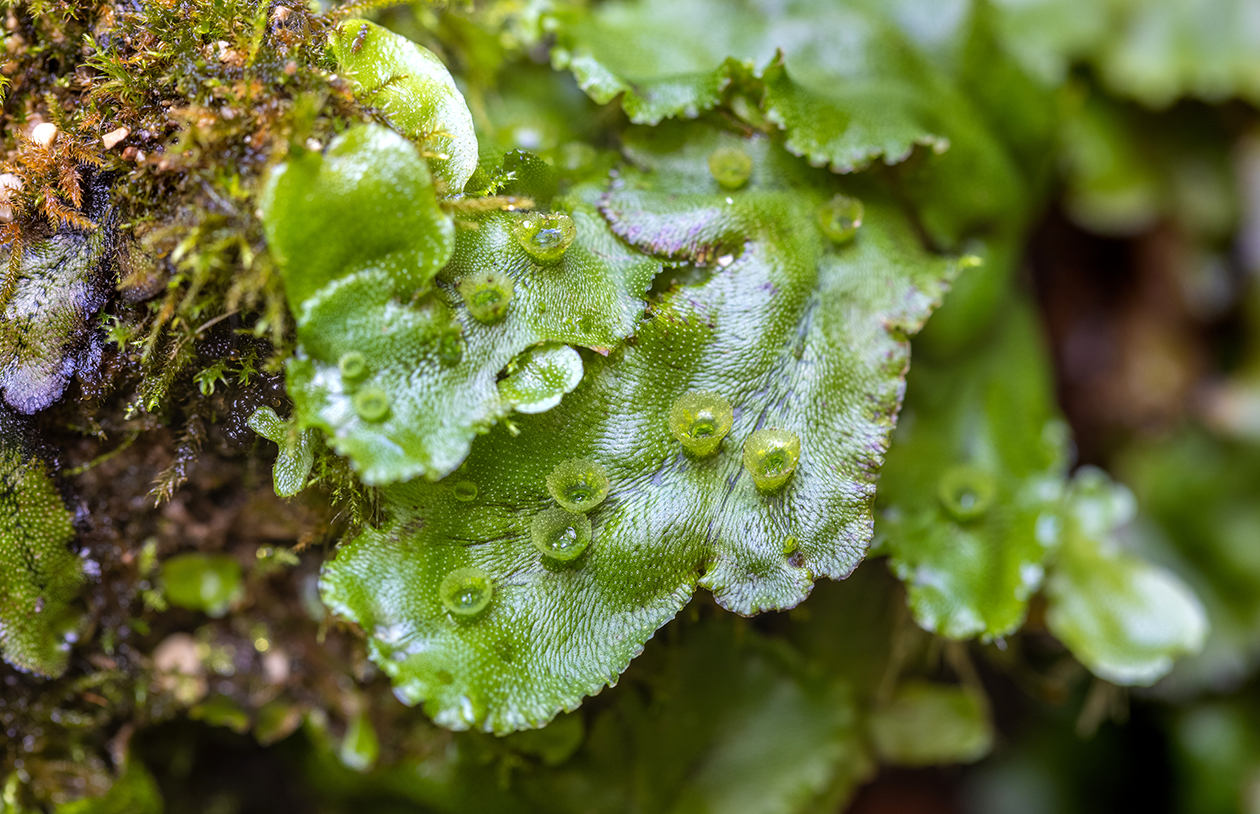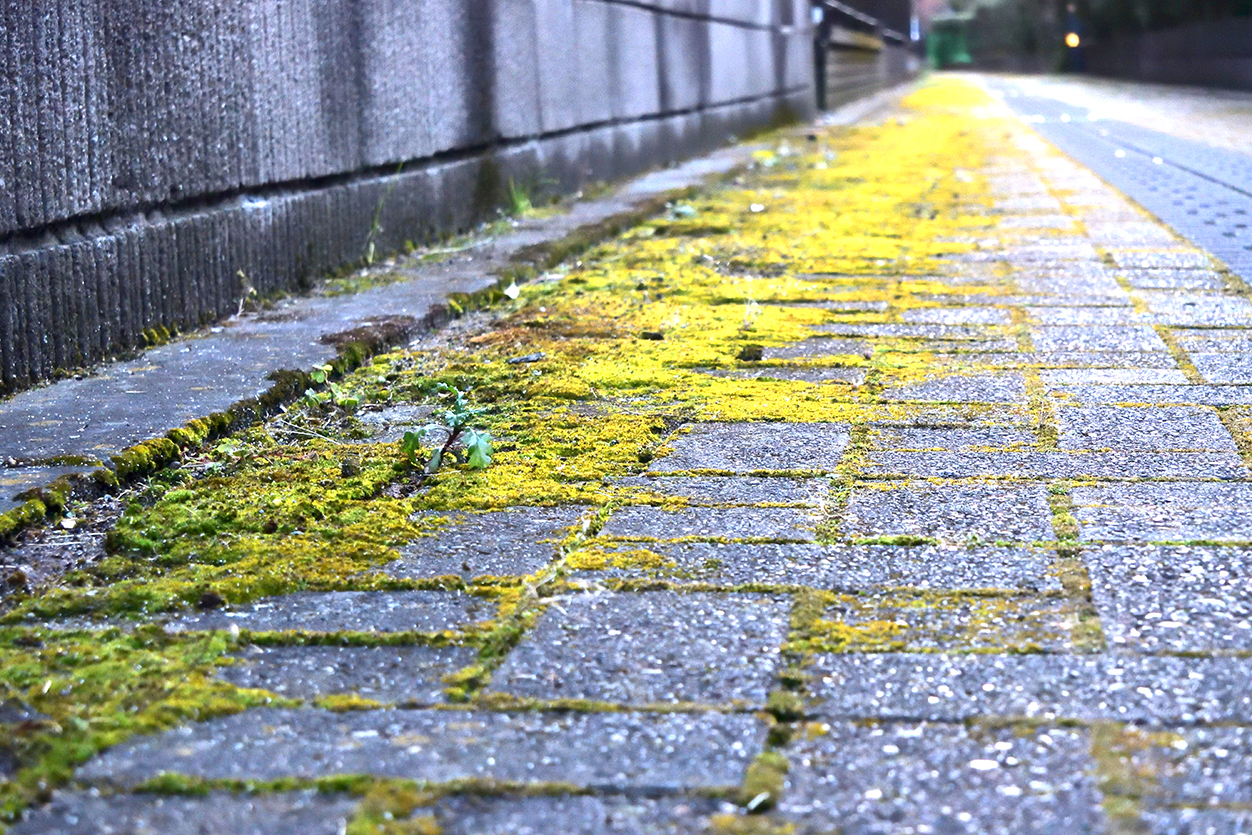AMENITY WEED MANAGEMENT
Our integrated amenity weed management services offer more sustainable solutions for controlling weed growth on public areas and highways - reducing herbicide usage by 60%


The issues that moss and algae cause on hard surfaces and public used areas, such as MUGA’s, tennis courts, children’s play areas and pavements can be effectively controlled with the right treatments at the right time – or at the same time as amenity spraying, ask us for details of our unique ENVIROPLUS service.
Moss, algae, lichens and liverworts can all be found growing on hard surfaces such as block paving, concrete pathways, steps, wooden decking, benches, tennis courts to name a few. Though moss and algae do not damage the surfaces in general they do cause slip hazards to public users, and residents when they become wet, or in frost and ice conditions.

Because Moss and Algae can be a hazard risk in winter, we’ve developed a method where these can be treated at the same time as amenity spraying for annual and perennial weeds via knapsacking. This treatment method is unique to Environment Controls and not only is it more efficient but costs less – a saving we pass on to you.
The benefits include;

Multi Use Games Area (MUGA’s) and tennis courts require regular and proactive maintenance to keep them in good order, if moss and algae are allowed to build up on the surface, water will not drain off and then flooding or waterlogging occurs making the surface and the facility unusable.
Hazardous moss-covered hard surfaces such as footpaths or running tracks can cause health and safety concerns and falling or slipping on these surfaces can cause injury.
Environment controls uses several methods for controlling moss, algae and lichens on a variety of surface types and a bespoke management plan can be put together depending on the affected sites. These treatments can even take place within the winter months although icy and wet conditions are not the best times due to the efficacy of biocide treatments with extreme cold and wet atmospheric conditions.

In general, having excessive moss within fine turf, lawns and on sports fields is due in part to the grass struggling either by environmental impacts such as low light, compacted ground and excessive moisture. If grass areas are left untreated the moss within the turf will eventually outcompete any grass within the surface.
Moss on a sports field can lead to the lack of a decent quality playing surface, leading to excess surface water, the moss dying off in the summer leaving large bare patches also water gets held near the top of the surface this encourages areas to sit wet which in turn results in a thatch build up.
We will help you take control of unwanted weeds such as Creeping buttercup or Lesser plantain, on fine turf grassy areas, sports grounds and play areas. We have found the most cost effective solution is to have multiple grounds treated in one day and we can offer a fixed price to help with budgeting.

Liverwort can grow on hard surfaces such as concrete, tarmac, wooden decking and street furniture and monuments. Characteristically has a green flat plate type body with no leaves present. One common and eye-catching example would be Marchantia (right), this species is often topped with a structure shaped like an umbrella which carries the plants sexual organs. Spores are produced in small capsules for propagation. There are estimated to be 6000 to 8000 species of liverworts.
Algae is commonly found on external wooden benches, block paving and concrete surfaces such as a car park. Usually a powdery or film like deposit usually found on garden furniture and prevalent on stonework. Mis-identified as algae are the green or black jelly type growths that appear in damp cooler weather these in fact are cyanobacteria or “Nostoc”. As with mosses algae lack true roots and are classed as photosynthetic organisms and often form colonies, most algae are aquatic but terrestrial algae.

Moss is a green carpet type mass, usually found growing on damp, light restricted areas. Block paving is particularly prone to moss growth within the cavity between the pavers. Mosses are none flowering plants and produce spores for propagation, they have stems and leaves but do not have ant true roots, instead they have rhizoids which are small structures resembling hair.
Mosses date back 450 million years and comprise of 15,000 to 20,000 species and unbelievably occur on every continent and eco-system.
Lichen is a silvery crust like structure commonly found on garden furniture and benches, can also be found on street paving and within urban settings. Appears crust like and in some instances leafy. Lichens are not a single organism; they are a stable symbiotic association between algae and a fungus and/or cyonbacteria.
